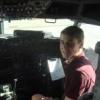
Sign in to follow this
Followers
0

Company Specifics; Making the NGX More Enjoyable!
By
wisefox7524, in PMDG 737NGX | 737NGXu


By
wisefox7524, in PMDG 737NGX | 737NGXu